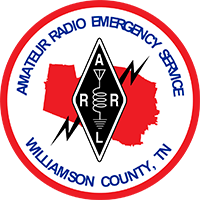Winlink Training with ICS-213 at Home
Saturday, February 17, 2018 from 1 pm to 2 pm Central
WCARES Winlink Training with ICS-213 Home Exercise II will take place on Saturday, February the 17th between 1pm and 2pm (after the next Chew & Chat). It will run one hour instead of two.
Like the first exercise, you’ll be able to participate from home or anywhere you can operate Winlink. The participants will use the ICS-213 form template in Winlink to answer skill-testing questions derived from the ARRL Ham Radio License Manual. The questions will be from the Technician question pool.
In the first exercise, the participants issued one ISC-213 General Message form and “Replied” to many. In this exercise, the participants will be issuing the ISC-213 General Message form.
Class/Modes:
All license classes can participate and don’t worry about your level of experience with Winlink.
You can use any Winlink mode available to your license class and equipment; You can operate using Telnet over the Internet, Packet on VHF/UHF or Winmor/Pactor over HF. You can find the latest Frequency Band Charts here: http://www.arrl.org/graphical-frequency-allocations
If you participated in the first WCARES Winlink Training with ICS-213 Home Exercise, I would like to encourage you by challenging yourself not to use Telnet and try to use either Packet on VHF/UHF or Winmor/Pactor over HF. If you do not have radio capabilities, please continue to use Telnet.
Winlink/RMS Express:
You will need Winlink installed. Please go to the bottom of the Winlink Training with ICS-213 at Home Exercise announcement, posted on Nov 6, 2017 for instructions. https://wcares.org/winlink-training-with-ics-213-at-home/
Point System:
This is not a contest. The point system was created to help show you how well you did. In this exercise, you can keep track on how well you did.
Participants who are using Packet or Winmor/Pactor will receive bonus points. This will be based on the honor system.
5 points for using Packet mode
7 points for using Winmor or Pactor mode
1 point for each completed ISC-213 Question Sequence
15 point for each Bonus Question
10 point for participating the exercise from 1pm to 2pm
Some tidbits-
You do not need to stay for the whole exercise. If you need to leave early, please notify Net Control.
We have Elmers to help you. You are welcome to do the exercise at the EOC.
Please remember, this exercise is about learning a skill set and about having fun doing it!
Thank you,
Janise, KK4HTA
